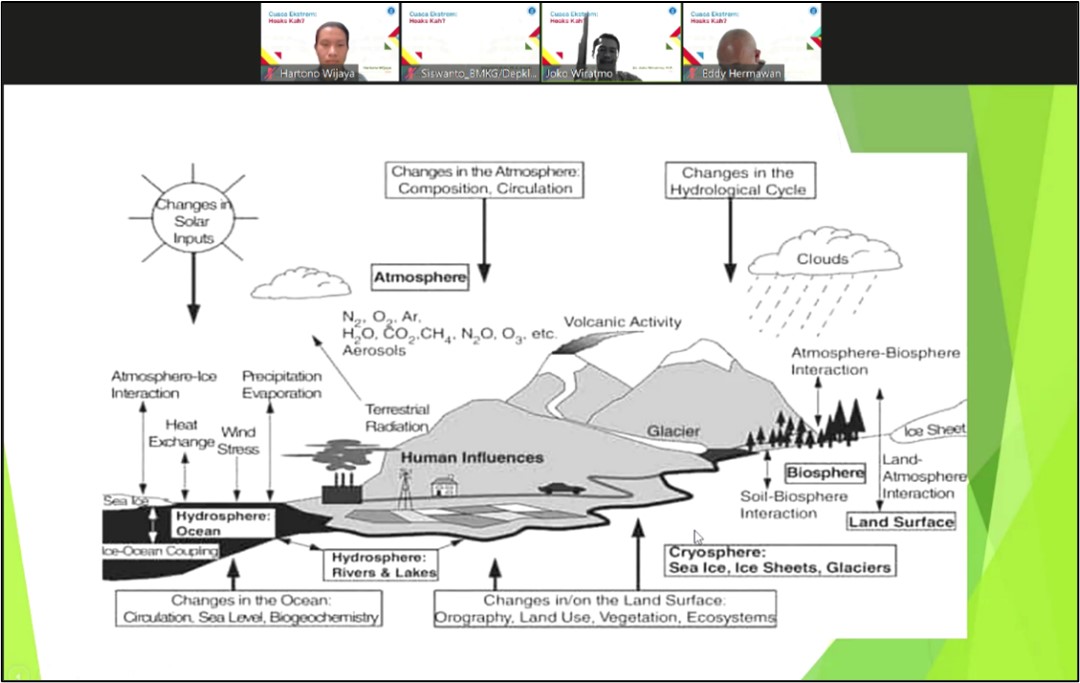Professor’s Scientific Oration by Prof. Dr. Rubiyanto Kapid: Knowing the Diversity of Microfossils and its Role in Nature
By Adi Permana
Editor Adi Permana
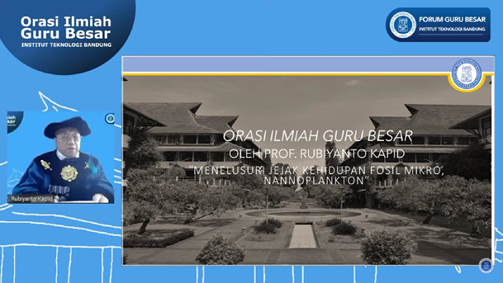
BANDUNG, itb.ac.id—The Institut Teknologi Bandung (ITB) Professor Forum held the Professor’s Scientific Oration which had Prof. Dr. Rubiyanto Kapid from the Faculty of Earth Sciences and Technology (FEST) as its speaker, Saturday (6/8/2022). Prof. Rubi had the opportunity to present his research on “Searching the Traces of Micro Fossil Life, Nannoplankton”. This event was held offline in the ITB West Hall Building and also online through Institut Teknologi Bandung’s YouTube.
About Micro Fossils
Paleontology is divided into two: Macropaleontology and Micropaleontology. Macropaleontology studies large scale fossils (cm to m). Meanwhile, micropaleontology studies small scale fossils (mm to micrometers), therefore helping tools such as microscopes are needed. This field is one of Prof. Dr. Rubiyanto Kapid’s field of specialties.
Only a small sample is needed to identify a microfossil. This small size causes the number of microfossils in a single sediment rock to be very abundant. Next, the rock samples are prepared beforehand and then identified using a microscope. On this occasion, Prof. Rubi explained about nannofossils, pollen and spores, as well as foraminifera.
About Limestone Nannofossils
Limestone nannofossils are microscopic organisms (±2,25 µ) with their body made up of calcareous plates (Coccoliths) originating from Coccolithophores. Coccolithophores are organisms that produce calcareous plates which can connect with each other to build a spherical or cylindrical structure or framework that covers up a part or all of its body. If a Coccolithophore is fully covered with Coccolith, it is then called a Coccosphere.
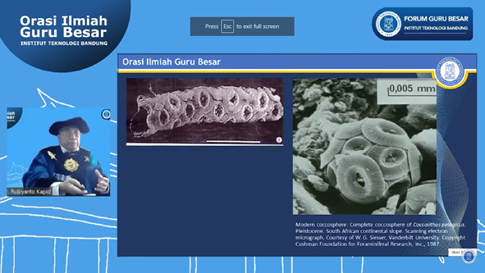
Coccoliths can have various shapes such as simple round, cylindrical, hair-like, stars, and even flower resembling. Sometimes, Coccospheres in nature can also have two different Coccoliths or is known as Dimorphism. This phenomenon occurs as a result of differences in reproduction carried out by microorganisms. Dimorphism can be used to interpret the process of rock formation.
Coccospheres that die due to being eaten by predators will release Coccoliths to the open nature so that they become individual nannofossils scattered throughout the seabed sediments. Individual appearances of these nannofossils can be seen using a polarizing microscope so that their optical properties and not only their shape can also be clearly observed.
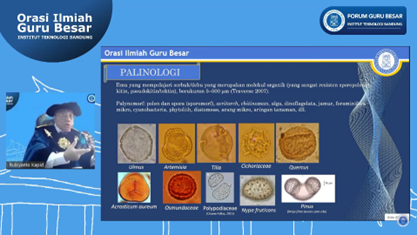
Other than nannofossils, Prof. Rubi also explained about Palynology or the study of pollen and spores sized 5-500 micrometers. Pollen can be found in flowering plants, making it closely related to honey. Further knowledge of science that studies the analysis of pollen content in honey (Melissopalynology) is being developed.
Foraminifera Microfossils
Next, Prof. Rubi explained about Foraminifera microfossils. They can be classified to two types based on their size, namely Large Foraminifera (mm in size) and Small Foraminifera. Small Foraminifera can be further divided to two types based on their shapes, that is planktonic and benthic foraminifera. Planktonic foraminifera live in the water columns with very aerodynamic shapes, while benthic foraminifera live on the bottom of the sediment with pointed/oval shapes.
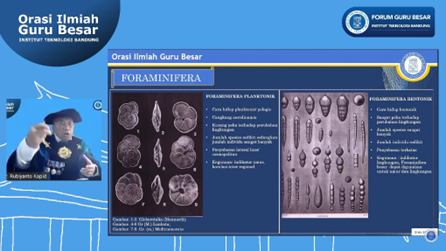
According to Prof. Rubi, there are many uses in studying about Microfossils. All microfossils each have a biozonation or age frame from said microorganism’s life to the geological time scale, so that it can be used to identify and sort the rocks that we study from the oldest to the youngest. Moreover, interpretation of the depositional environment, biostratigraphic correlation or connecting one place to another based on the similarity of its fossils, stratigraphic sequences regarding whether they have experienced a rise or drop in the sea level, paleoclimate, and the ability to develop a burial history or sediment burial from an area or basin which is still being developed.
In his closing speech, Prof. Rubi hoped that the science of Microfossils can keep on developing and not rule out the chances of coexisting with technology. The digitization of microfossils is hoped to be available in the future in the form of microfossil recognition applications. With this, there would be no need for hundreds of millions worth of equipments just to identify microfossils in sediment rocks.
Reporter: Pravito Septadenova Dwi Ananta (Geological Engineering, 2019)
Translator: Hanna Daniela Ayu (Aerospace Engineering, 2021)

.jpg)
.jpg)
.jpg)
.jpg)
.jpg)

